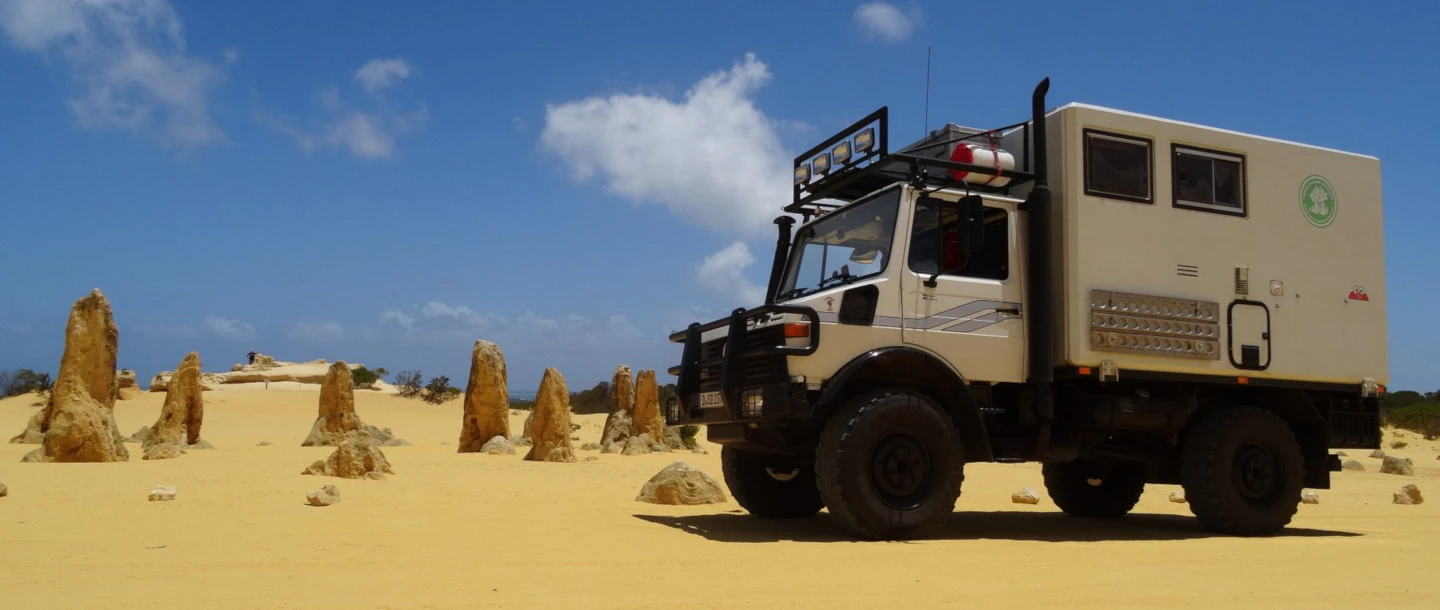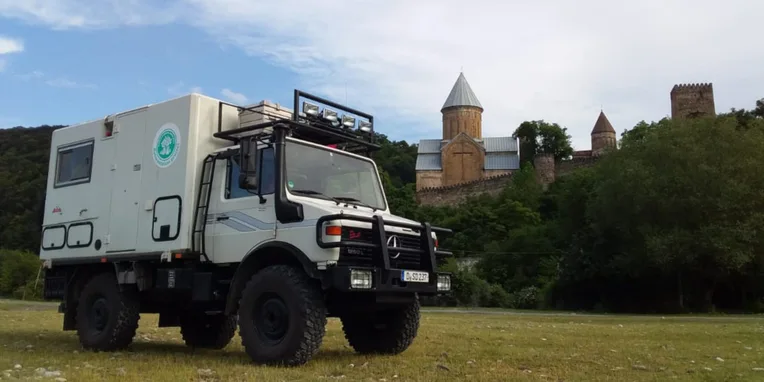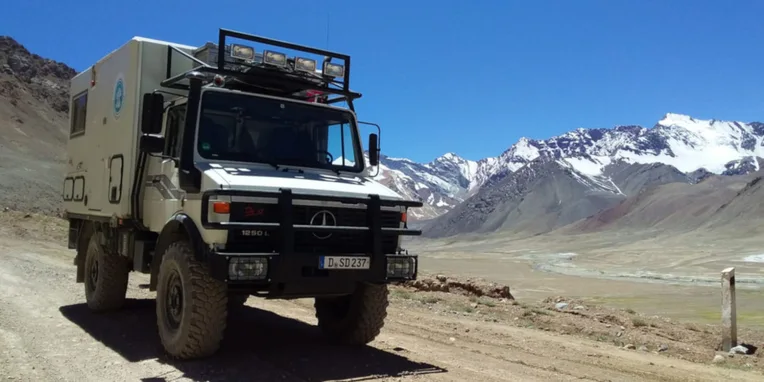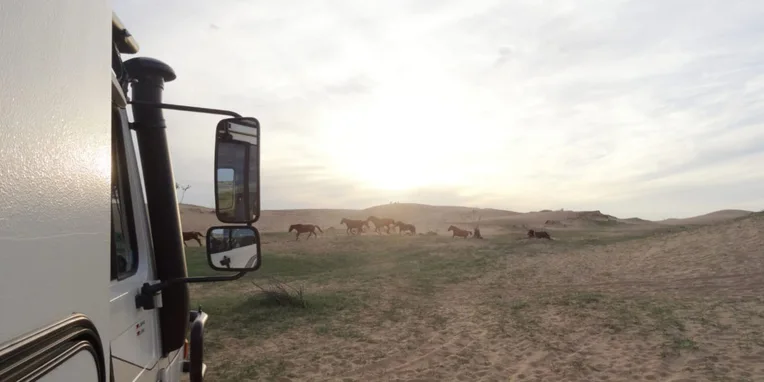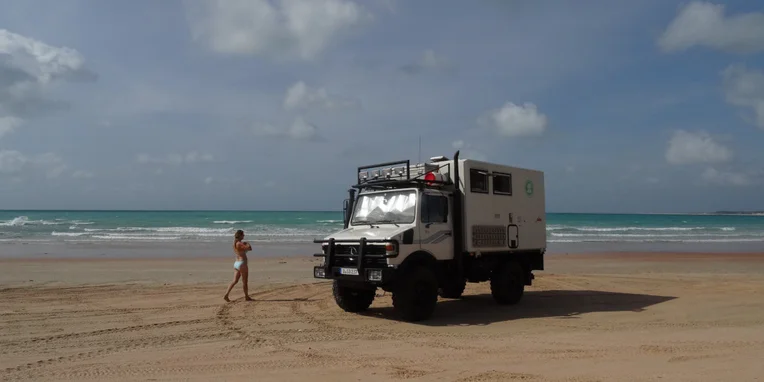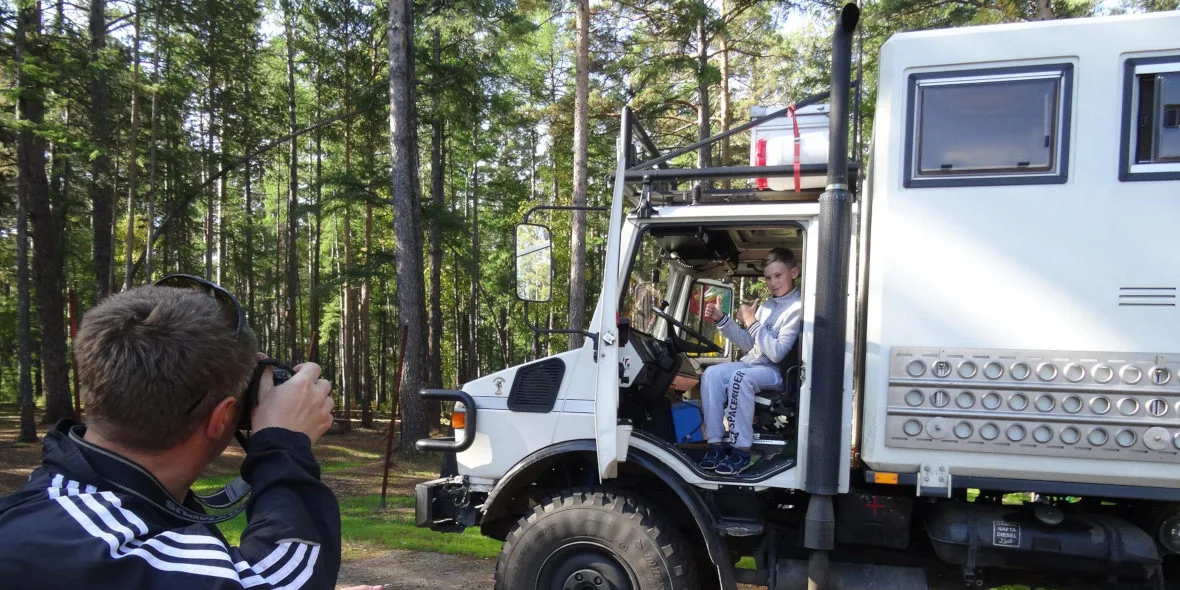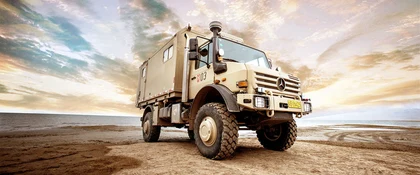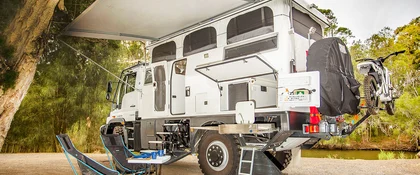On a round-the-world trip with the Unimog expedition vehicle – Part 1.
To many people it sounds like a lifelong dream: travelling round the world in a converted Unimog. This dream has come true for Sonja Beheng and Dirk Erker. For nearly nine months now the draughtswoman and the car and motorbike mechanic have been on the road in their Unimog U 1450 L, model year 1992, which they have lovingly nicknamed ELMO. The husband and wife estimate that their circumnavigation of the world will take them two years. Team ELMO documents the journey on Facebook.
Sonja and Dirk consciously scheduled in their adventure between two stages of life. Before their trip they burned all their bridges in Düsseldorf, where they used to live, and bought a farm in Bad Muskau, Saxony. The two nature-loving rangers want to renovate it and open it up to tourists upon their return.

Ever eastward in the Unimog expedition mobile.
MBS World: Your journey began in Bad Muskau, Saxony. Which route did you take from there and how many countries have you visited so far?
Dirk: I think we've travelled through 20 countries up to now. We only had to drive for three minutes before we entered Poland. From there we continued eastward. We had only planned the approximate itinerary as far as Vladivostok – because of three different visas. Russia wanted to know when we wanted to enter the country and leave it again.
Sonja: The schedule as far as Vladivostok was also important, because we definitely didn't want to travel through Siberia in winter.
Dirk: Other than that, we plan afresh every morning. Quite a lot can change during a journey like this – due to political circumstances, too. For example, we actually wanted to go to Azerbaijan and Armenia. But things were a bit too lively on the political front there at the time. So we adjusted our route spontaneously.
You're currently in Australia. What happened after you left Russia?
Dirk: ELMO travelled to Australia by ship, and we backpacked to South Korea, Japan and Indonesia. We were able to follow the Unimog's sea voyage on the internet and five or six weeks later we got ELMO back in Melbourne.
And then there was a big, happy reunion?
Sonja: Of course!
Dirk: It's our house, you know! No hotel bed is as nice as the ELMO bed. [laughs]
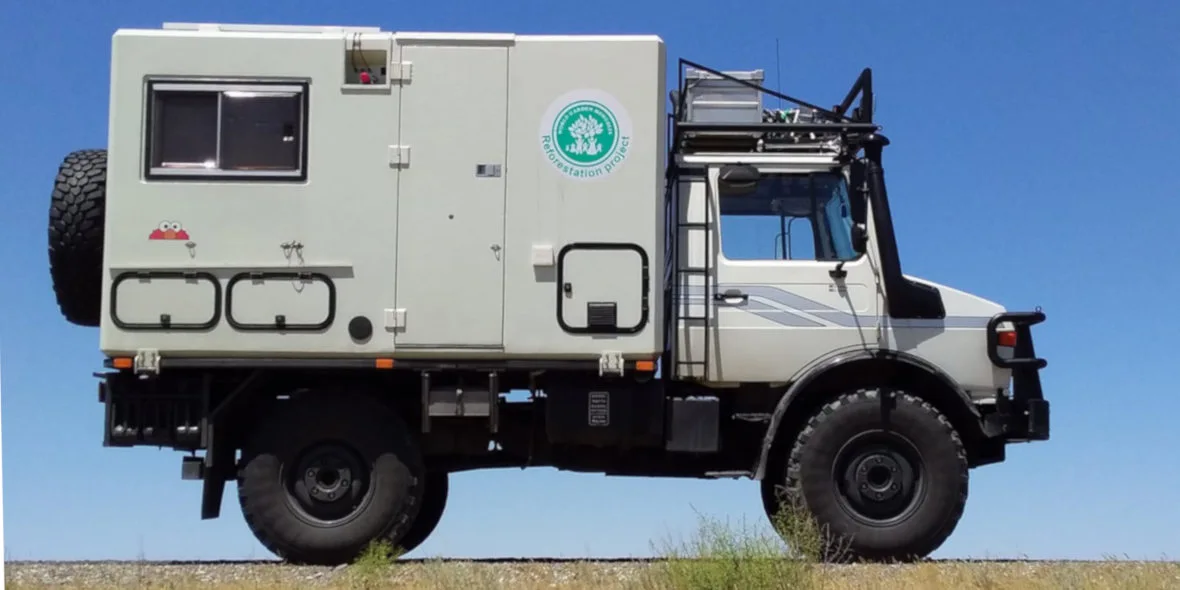
"Let's pack up and go."
Every journey has to be planned. How much time elapsed between having the idea and setting off?
Dirk: A year and a half?!
Sonja: I have to say that Dirk would have preferred more time to plan. The idea of going away for a longer period of time came after a trip to China, Vietnam and the Philippines. That was when Dirk thought OK, we could now draw a line under everything and sell all our possessions, but I'd at least like a base where we can put our things and somewhere to go after our travels. And that's exactly what we did.
Dirk: When we were hiking all over Germany we fell in love with the East, and then bought the farm in Bad Muskau.
Sonja: Then we looked for the right vehicle for our trip. And found ELMO. Once it was with us, the desire to set off grew by the day. Dirk had actually planned to take three years to get the Unimog ready for the off. But after a year I thought let's just pack up and go.
Dirk: That meant that we had to do some of the work on the Unimog as we were travelling. But so far that's worked out really well. We've always been able to find the right places.
